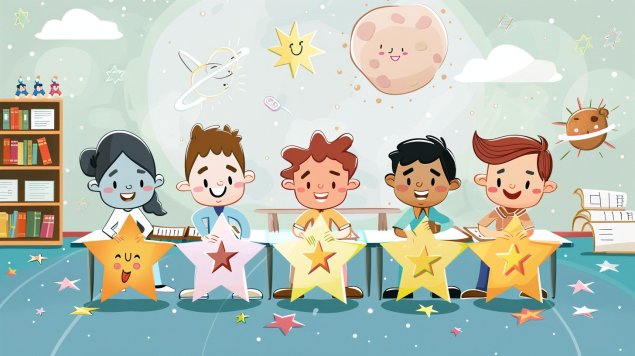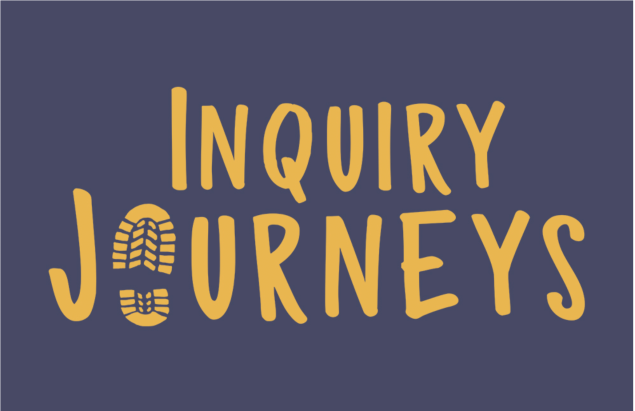Overview Link to this section
Students in SFUSD engage in daily social studies instruction (through both integrated and stand-alone units). As our department explores curriculum, eventually there will be three, 5-7 week stand alone units for each grade level that can alternate with Science units during the year. We're currently in the process of piloting potential curricula. Before moving to adoption we would need to evaluate and pilot potential options. Due to our District's financial budgetary constraints and making sure that teachers can focus on the newly adopted ELA curriculum, it will not be feasible to get to adoption this upcoming school year. However, our team is committed to trying to provide ongoing social studies resources to teachers across K-5. Social Studies instruction prioritizes building a strong foundation in community and the understanding that every community member (citizen) has a voice in the ways our communities function and are built. We explore history/social studies as windows to the past and present while working together to intentionally build a classroom community rooted in the SFUSD Humanizing Values (knowledge of self, solidarity, and self-determination) and core concepts of Ethnic Studies.
Social Studies Instructional Priorities (scroll left to right)
Link to this section
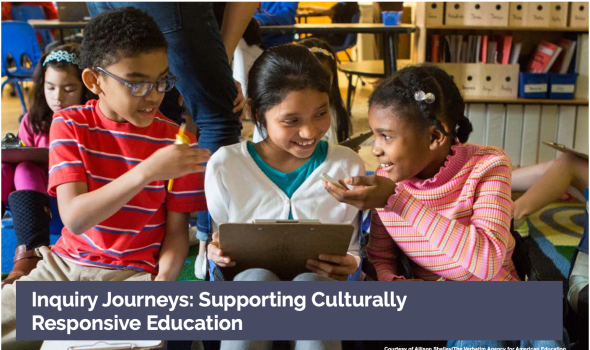
Culturally Responsive Education
“Culturally responsive teaching is about helping culturally and linguistically diverse students build their skill and capacity to do rigorous work.” —Zaretta Hammond
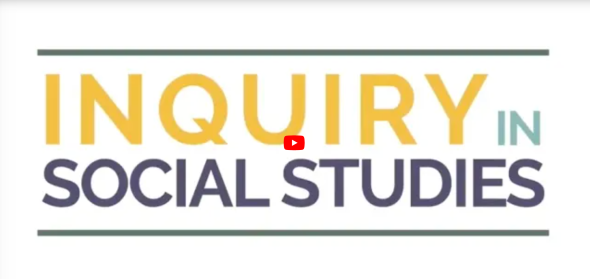
Inquiry
Students engage in authentic cycles of inquiry: developing questions & planning inquiry, applying disciplinary tools & concepts, evaluating sources & using evidence, and communicating conclusions & taking informed action.
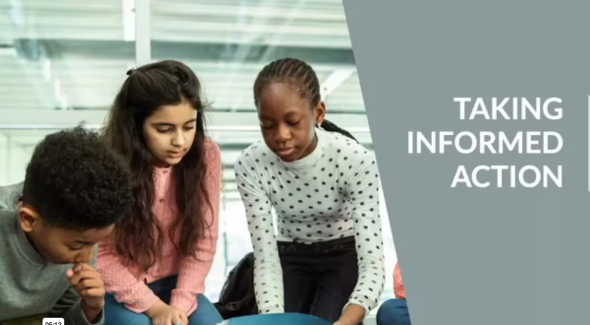
Taking Informed Action
Students take action in their community based on the information they have gathered throughout their inquiry.
Current Events Link to this section
Virtual Libraries
Link to this section
**Remember, you should always preview the books in these libraries to make sure that they are appropriate for your grade level and students. These books often span PK-5 and should not be used in isolation, but as part of a larger set of lessons for the best impact.

Inclusion Library Bookshelf
Here is a collection of read alouds that have been compiled for SFUSD Inclusion Week, but could be used throughout the year. This bookshelf is based on the books recommended in the SFUSD Inclusion Resource Guide.

American Indian Heritage Bookshelf
Here is a library that can be used for Native American History month, but should be used throughout the year. These books have been recommended by the SFUSD American Indian Resource Guide and the American Indians in Children’s Literature List.
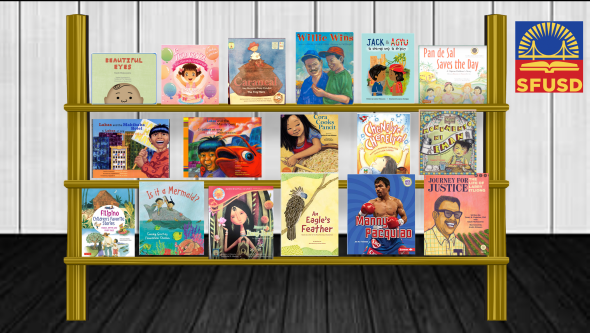
Filipinx American Bookshelf
Here is a collection of read alouds that have been compiled for Filipinx Heritage Month, but could be used throughout the year. This bookshelf is based on the books recommended in the SFUSD Filipinx Heritage Guide.

Diwali Read Aloud Library
Here are some read alouds and links to help you teach about Diwali in your classrooms. They can be used now and throughout the year as we discuss holidays, traditions, cultures, and families.

Diwali Bitmoji Classroom
Diwali Bitmoji Classroom submitted and compiled by Ekta Kumbhani (1st grade teacher @ Grattan)

Dia de los Muertos Bookshelf
Here is a collection of read alouds that have been compiled for Día de los Muertos, but could be used anytime during the year to discuss holidays.

Latiné American Bookshelf
A virtual library that features Latiné authors and characters that can be used throughout the year

Latinx Virtual Library
Titles taken from the Latinx Heritage Guide to use for read-alouds throughout the year.

Asian American and Pacific Islander Heritage Month Virtual Library
This is a collection of read alouds that have been compiled for AAPI Month, but could be used throughout the year.
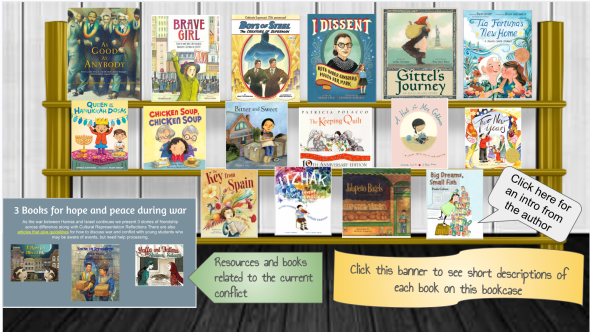
Jewish American Heritage Bookshelf
This is a collection of read alouds that have been put together for Jewish American Heritage Month, but can used throughout the year.
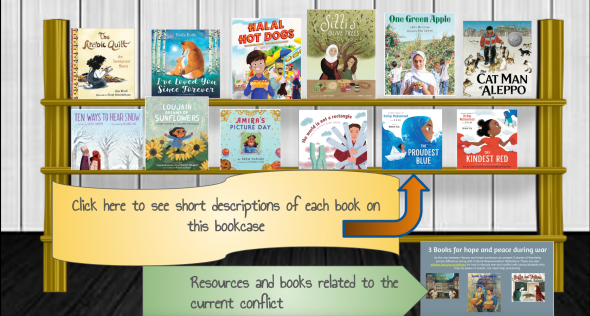
Arab American Heritage Bookshelf
This is a collection of read alouds that have been compiled for Arab American Heritage Month, but could be used throughout the year.

LQBTQ+ Pride Bookshelf
Here is a collection of read alouds that have been compiled for LGBTQIA+ Month, but could be used throughout the year.

Women's History Virtual Library
This is a collection of read alouds that have been compiled for Women's History Month, but could be used throughout the year.

Black History Month Virtual Library K-2 compiled by Tamara Fields
Here is a collection of read alouds that have been compiled for Black History Month by Tamara Fields from Sherman Elementary, but can be used throughout the school year

Lunar New Year Library
Here is a collection of read alouds that have been compiled for Lunar New Year, but could be used throughout the year. We have tried to attach bilingual versions when available. Please feel free to email me if you know of other bilingual books or video read alouds to include at romerom@sfusd.edu

Back to School Virtual Library
Here is a collection of books to use at the beginning of the year or anytime you want to do some community and identity building in class.

Holi Bitmoji Classroom
Holi Bitmoji Classroom submitted and compiled by Ekta Kumbhani (1st grade teacher @ Grattan)
Links to SFUSD Cultural Resource Guides (scroll left to right)
Link to this section

SFUSD Inclusion Resource Guide

SFUSD American Indian Resource Guide
This guide has beed updated and presented by our Indian Education Program to provide resources for educators to use throughout the year

SFUSD Filipinx History Resource Guide

SFUSD Latinx Heritage Month Resource Guide

SFUSD Black History Resource Guide

SFUSD Elementary Pride Resource Page

SFUSD Asian American & Pacific Islander Resource Guide
Field Trip Sites (Virtual and In-Person) (scroll left to right)
Link to this section

San Francisco Fine Arts Museums
We are currently accepting requests for the Get Smart with Art fall program (October 2023 to January 2024). Please submit an application using this form. The fall booking period closes on September 11.
On September 25, applications will open for the Get Smart with Art spring program (February 2024 to May 2024). Please submit an application using this form. The spring booking period will close on November 6.
To prepare for your visit, please review our educator resources. Stay up-to-date on plans to expand our educational offerings through our newsletter.
Questions: schooltours@famsf.org

San Francisco Museum of Modern Art
We are currently scheduling guided and self-guided visits through January 2024. Guided tours at the museum are available for grades 3-12. Self-guided visits are available for grades K-12.
Please note: due to capacity limitations in Yayoi Kusama: Infinite Love, we are unable to schedule school groups for this exhibition. All tickets for this exhibition, including for students and teachers, can be booked through tickets.sfmoma.org starting September 12, 2023.
Be sure to check our Teacher Resources page for art projects, artist-designed activities, videos, animations, and discussion questions.

Oakland Museum of California
OMCA looks forward to greeting you and your students with onsite programs that help students reflect, connect, and contribute to their communities.
Explore the many stories of California and its people, while learning about the natural, artistic, and social forces that affect the state. Come investigate your own role in California’s history and its future.
Whether in OMCA’s Galleries of California Art, History, or Natural Sciences, or one of our special exhibitions, all of our cross-disciplinary programs are rooted in inquiry, dialogue, creative expression, and centering joy and justice.
We

Museum of the African Diaspora
MoAD celebrates Black cultures, ignites challenging conversations, and inspires learning through the global lens of the African Diaspora. Lesson Plans, Museum Tours, MoAD in the Classroom, Education Resources,
Original Programs, Workshops, Talks, and Engaging Events.

Angel Island Grade (4/5th grades, maybe 3rd with a direct call)

Tongva Experience (4th grade)
The Hermosa Beach Historical Society & Museum presents their virtual Tongva Experience Field Trip. Julia Bogany, a Tribal Council Member and the Cultural Consultant for the Tongva-Gabrielino, the native people of the Hermosa Beach South Bay shares the history, stories, and culture of the Tongva Tribe with our students to help fulfill their California History educational requirement.

California Indian Museum and Cultural Center Virtual Tours (4th grade)
Here you can access virtual tours of the California Indian Museum and Cultural Center exhibits, video lessons and curriculum for their popular Native STEM Makers Program. You will also find curriculum, handouts, and flyers.

Chinese Historical Society of America
The Chinese Historical Society of America offers educators classroom resources that they can use before, during, or after their visit to the museum.
The curriculum guide attached contains resources related to Chinese American Exclusion/Inclusion or Towards Equality: California’s Chinese American Women

Chumash Indian Museum
Some educational resources and activities for you to learn about the expansive Chumash culture.
Recommendation: Click on everything. There are lessons that integrate Social Studies and Science (5th Grade Lesson Plan: Shadows of the Sun and a Chumash Calendar), There are current stories of Chumash people today (We Have Always Been Here: A Queer Navajo Wedding) and stories about how the next generation is keeping traditions and customs alive today through paddling and tomols.
Partnership and Community Resources (scroll left to right)
Link to this section

Sesame Workshop: Coming Together
Lots of videos with songs and stories along with deeper discussions that explore race, identity, ethnicity and self-love.
From Sesame Workshop:
Coming Together is a Sesame-wide initiative that helps children grow up with a healthy self-identity and sense of belonging. We’re working to create a world where all children can reach their full potential—and do so in celebration of our diverse world. Our research-based, child-centered resources include the whole family, inviting parents and caregivers, educators, and providers to help children celebrate their own race, ethnicity, and ethnicity and become upstanders for themselves and one another.

Seesaw Lessons K-2 Community Builders
Here is a link to some Community Builders made by Seesaw for TK-2 Students

The California Indian History Curriculum Coalition
The California Indian History Curriculum Coalition (CIHCC) is a group of educators, tribal scholars, and native activists who promote the creation, adoption and implementation of California Indian-vetted curricula.
The resources on this page support our commitment to public/private school educators focused on infusing a California Indian voice into the content of what our children learn in school. Please use the Curricula & Lesson Plans provided below, organized by tribal identity.

4th Grade California Indian Unit
This unit is written and provided by our partners in the Indian Education Program for 4th grade teachers. However, 3rd grade teachers may want to take a look at it as the focus addresses 3rd grade standards. Any questions regarding this unit should be sent to MaryHelen Sherman shermanm1@sfusd.edu

National Museum of the American Indian
Native Knowledge 360° (NK360°) provides educators and students with new perspectives on Native American history and cultures. Most Americans have only been exposed to part of the story, as told from a single perspective through the lenses of popular media and textbooks. NK360° provides educational materials, virtual student programs, and teacher training that incorporate Native narratives, more comprehensive histories, and accurate information to enlighten and inform teaching and learning about Native America. NK360° challenges common assumptions about Native peoples and offers a view that includes not only the past but also the vibrancy of Native peoples and cultures today

Teaching LGBTQ+ History: Instructional Resources for California Educators, Students, & Families
Lessons that focus on LGBTQ+ history in California and aligned to the current CDE Framework. Most lessons are geared towards 4/5th grades, but there are are 2 lessons that could be used with 1st/2nd.

California History and Social Studies Project
This site has various lessons with varying degrees of success by grade level, but is a good site to pull primary sources and images.
Standards and Frameworks (scroll left to right)
Link to this section

California History-Social Science Framework
This is the latest and most up-to date version of the California Department of Education History-Social Science Framework K-12

College, Career, & Civic Life for Social Studies State Standards

California History/Social Science Content Standards

L4J Social Justice Standards
The Social Justice Standards are a set of anchor standards and age-appropriate learning outcomes divided into four domains—Identity, Diversity, Justice and Action (IDJA). The standards provide a common language and organizational structure: Teachers can use them to guide curriculum development, and administrators can use them to make schools more just, equitable and safe. The standards are leveled for every stage of K–12 education and include school-based scenarios to show what anti-bias attitudes and behavior may look like in the classroom.
Educators can use the Social Justice Standards as the basis for building custom learning plans on tolerance.org. Free registration is required.
This page was last updated on December 11, 2024


